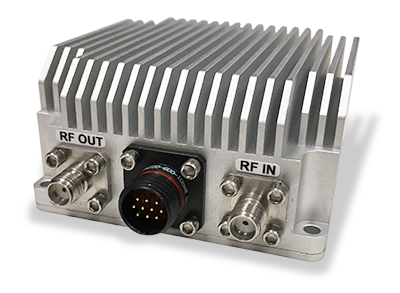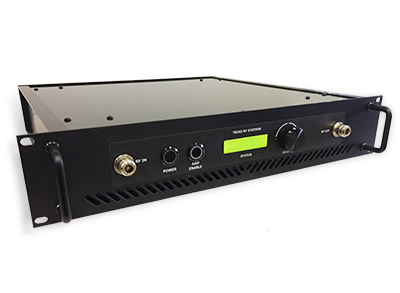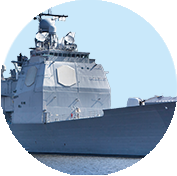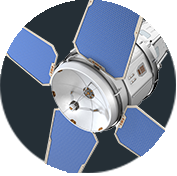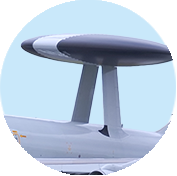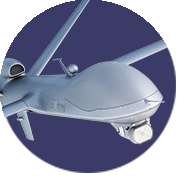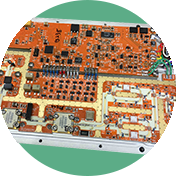
Understanding Custom RF Amplifiers Design Pitfalls and Conceptualizing the Design Stage
The right RF amplifiers must effectively boost an RF signal to a higher power level without signal or data degradation. Long-range applications are ultra-critical so a customized RF amplifier is sometimes required to suit a specific set of long-distance radio system criteria. With our extensive expertise, we will guide you through the process of getting a custom RF amplifier.
The Right Plan and Supplier The Design and Possible Pitfalls The Groundwork and Testing
Previously, we discussed practical steps to beginning the design of a custom RF amplifier. In this series of posts, we will shine a light on the steps in acquiring the perfect custom amplifier for you. We already laid out how to plan your RF amplifier so now you have a plan and the right supplier to work with.
Now, we will tackle the next phase of making your RF amplifier a reality. When it comes to designing a RF amplifier, you can encounter some possible design challenges. Once those are identified and addressed, you will take the first steps of translating your plan into the designing stage.
Dealing with Challenges in RF Design
Even with a clear customer plan, the job of a RF design engineer is still full of market surveys, trade studies, and design decisions. There are a lot of design challenges that play into the design of a final product, and you should be aware of them when pursuing a RF amplifier. Here are a few to consider:
Technology limitations – A RF design engineer can choose from various FET technologies to base your RF amplifier’s design around. Going with a newer technology, like Gallium Nitride(GaN), allows for more efficient designs in smaller packages, especially if SWaP is a priority. However, this decision can prove to be more challenging to design around. Older technologies, such as LDMOS and Gallium Arsenide (GaAs), are more consistent in performance, but may not work for the size/power you need for your amplifier.
Size, Weight, and Power (SWaP) – Speaking of the dimensions of your RF amplifier, SWaP can be a very distinct challenge for getting to your end goal. The size requirements usually dictate the size of the canvas, or circuit card, that the RF engineer has to work with. The smaller the size, the more intricate a design may have to be. This desire for a smaller size may impact the other circuitry required for power and control.
Environmental Requirements – The environment your RF amplifier will operate in comes into play for your design. Is your environment a stable test lab where power and cooling are not typically constrained or on an air vehicle with massive vibration challenges? A RF amplifier in space has a vastly different cooling design than one in a standard atmosphere. These environments can greatly impact the design of the amplifier and always pose a major challenge.
Unclear/Conflicting Customer Requirements – Customer requirements are the driving force behind custom RF amplifier design, but they can create design challenges from conflicting or unclear requirements. It’s important to have engineering involved in the design as early as possible, including during the requirements derivation stage. This can allow any obstacle to be communicated clearly and early so the design process can move on as smoothly as possible.
Custom RF Amplifier Design
Imagine having spent the proper time drafting the perfect blueprints for a house; you first need to take the necessary steps to design and build your foundation. With your well-developed plan and custom RF amplifier partner, the design process, or flow, can truly start.
The RF amplifier designer begins by establishing what the architecture of your amplifier will be. With a wide variety of requirements and criteria, a single device could do the job, but you may need something that is more complex, like a hybrid or Doherty combined design.
Once the architecture is solidified, a designer will use computer modeling to perform a software simulation of the RF amplifier's potential performance. The computer modeling requires the design characteristics, and its output is the physical layout of the final RF amplification stage. This helps maximize the transfer of energy of both the input and output matching networks of the amplifier, as well as provides estimates of performance.
Once a layout is formed, a designer will use pallet testing to verify the published specifications of the devices. Pallet testing happens on a simple circuit board and presents the designer an opportunity to characterize their chosen devices in real-world conditions. This is a crucial step to understanding how the blueprint of your RF amplifier will translate to the real world.
Now you have the final, high power amplification stage designed and analyzed, and the next step is to perform a cascade analysis. Cascade analysis is required to determine if the customer’s input signal needs to be attenuated, or more likely if pre-amplification is required, prior to the final stage amplification. For instance, if the final stage device cannot provide the required gain to amplify the low level input signal, multiple driver amplification stages may be added to the design prior to the final stage. This step weighs heavily in determining both the required DC power from the multiple amplification stages, as well as identifying the key heat generation points within the amplifier.
Your plans have become blueprints, and now your foundation is ready. Look out for our next post about laying out the PCB, building the RF amplifier, and testing your first prototype.
Summary
It takes years of expertise to push the boundaries of linearizing RF Solid State Power Amplifiers (SSPAs) while maintaining a price structure that allows RF amplifier solutions to meet cost targets. So, due diligence is crucial.
We've written a tech brief to help guide your team through the custom development process to ensure your team meets your cost, schedule, and performance needs.
“Key Considerations for a Successful Custom RF Amplifier Design”
Please feel free to contact us with any questions.

